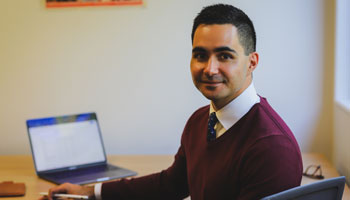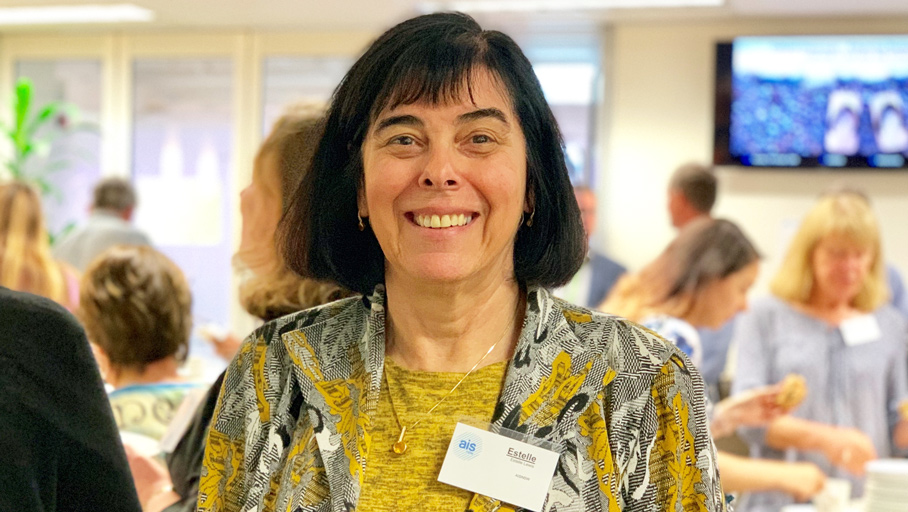Teacher accreditation reached a new standard last month when a course designed for face to face learning received triple the number of teachers when hosted online.
The course Creating Your Digital Portfolio was held in the recent school break to almost 50 independent teachers from metropolitan, rural and regional areas and Tasmania.
Teachers who attended the course found it to be highly valuable not just because it provided greater accessibility for those in regional areas but because it modelled good practice in online learning delivery.

Saint Columba Anglican School Teacher Daniel O'Mullane says the course exemplified excellent online learning delivery.
“I was impressed with the online presentation and thought the preparation, such as mailing paper activities, which combined with the great online learning strategies, made a successful day,” said Daniel O’Mullane from Saint Columba Anglican School in Port Macquarie.
“The key is to have the participants active – they have to be mentally active during each part of the course. And the content has to be targeted to their immediate needs.”
“I thought a moderator was a great addition, keeping questions flowing to the right people and keeping the presenter on topic. I would really encourage you to continue offering this mode of professional learning for some or all of your courses.”
Keys to successful online learning delivery
The AISNSW Teacher Accreditation team ran Creating Your Digital Portfolio to support teachers who were preparing their applications for Experienced Teacher accreditation.

AISNSW Head of Accreditation Estelle Lewis says preparation is the key to online course delivery success.
AISNSW Head of Teacher Accreditation Estelle Lewis said the course’s higher uptake was prompted by the accessibility online learning provided to teachers who were unable to attend face to face professional learning. The success of the event, however, rested on the time taken to rethink how a face to face course could provide the same depth of engagement and learning transmission in an online environment. The model can be applied to the delivery of all online lessons.
“When you are in a face to face mode presenters talk to participants and develop professional relationships but you can’t build those relationships in the same way online.
“Similarly, when you’re in a face to face mode you can have people in groups but it doesn’t work in the same way when a course is presented on a screen. The presenters have to think about how this strategy can work online so all participants have an opportunity to exchange ideas, build new knowledge and contribute,” Mrs Lewis said.
“The key is to have the participants active – they have to be mentally active during each part of the course. And the content has to be targeted to their immediate needs.”
“We made it as easy as possible to follow the activities. Presentations were short and teachers were actively engaged in learning activities for the majority of the time."
Mrs Lewis said the flipped model classroom was applied. Participants were asked to complete tasks prior to the course that were built on during the day. Collaborative tools such as Google docs and Padlet were used. Sessions were delivered in chunks - in three 90-minute sessions with a 30-minute break in between. Links to activities were sent out in advance and some course materials were posted to participants.
“We made it as easy as possible to follow the activities,” Mrs Lewis said. “Presentations were short and teachers were actively engaged in learning activities for the majority of the time.
“They weren’t sitting there listening and listening. We modelled activities and they either had individual tasks or we put them into breakout rooms so they could work in small groups.
A Teacher Accreditation team member monitored the live chat to respond immediately to questions throughout each session.
“Being able to respond to individual questions without distracting the rest of the group was important because this is what you would do if you were circulating in a face to face environment,” Mrs Lewis said. “They really appreciated the fact that they received those responses quickly.”
Mrs Lewis said face to face was still the best mode of professional learning however online learning presented other opportunities.
“There’s nothing like being in a room and establishing a personal relationship with teachers, but in an online environment there’s nothing like doing activities together on the screen and having a teachers have an ‘aha' moment when they have better understood the accreditation process or learnt a new skill they can apply to their teaching,” Mrs Lewis said.
New to AISNSW and want to receive AISNSW Education News updates? Click here to register, and select ‘AISNSW Education News’ on the Areas of Interest/Subscriptions page.